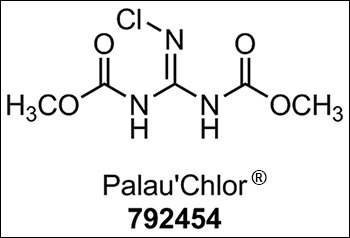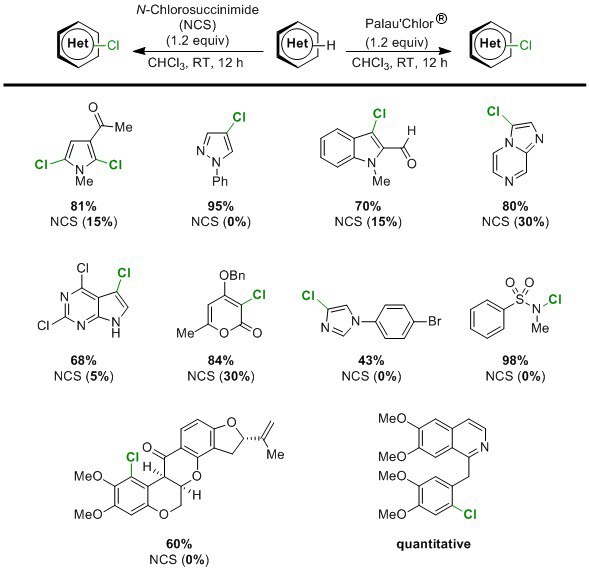Palau’Chlor®: Easily and Selectively Functionalize Lead Compounds

Introduction
Aryl chlorides are commonly used in cross-coupling reactions and can serve as key intermediates towards the synthesis of pharmaceutical drug candidates and natural products. Therefore, the addition of chlorine onto synthetic compounds can lead to the diversity of functionalized compounds. Current chlorination reagents include SO2Cl2 or Cl2 which can pose safety hazards due their high reactivity. Alternatively, N-chlorosuccinimide is safer to handle but has a decreased reactivity profile. Palau’Chlor® (792454) is a bench-stable chlorinating reagent offering adequate reactivity and high-selectivity.
Advantages
Previous chlorinating methods suffer from limited reactivity profiles or pose safety hazards. Palau’Chlor® is a highly reactive chlorinating reagent that can be safely used on the bench-top using operationally simple reaction conditions. Furthermore, it is able to chlorinate molecules that are unreactive towards other chlorinating reagents. Palau’Chlor® is compatible with many functional groups, thereby expanding the available heterocycles that can be functionalized. Although highly reactive, Palau’Chlor® can selectively chlorinate heterocyclic lead compounds (in discrete and predictable locations) at any synthetic stage with minimal over-chlorination.
Representative Applications

Materials
To learn more about other products in our catalog that have been established in collaboration with Professor Baran, please visit his Professor Product Page.
Reference
To continue reading please sign in or create an account.
Don't Have An Account?